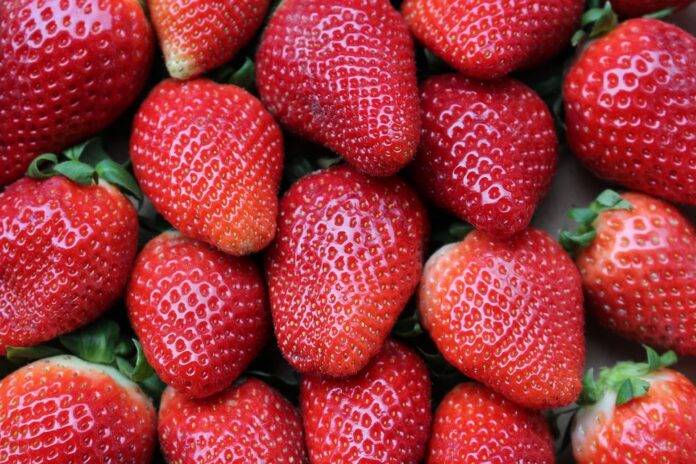Introduction
Strawberries have long been a favorite fruit around the world, known for their vibrant color, sweet flavor, and numerous health benefits. Over the last decade, strawberry consumption trends have evolved significantly, influenced by factors such as health awareness, consumer preferences, and market innovations. This report explores the top ten trends in strawberry consumption over the past ten years, backed by specific data, financials, and volume statistics.
1. Growth in Organic Strawberry Sales
The rise of organic products has transformed the strawberry market. According to the Organic Trade Association, organic strawberry sales in the United States grew by 20% from 2019 to 2020, reaching approximately $482 million. Consumers are increasingly opting for organic strawberries due to concerns over pesticides and a desire for healthier food options. The organic strawberry market represents about 15% of the total U.S. strawberry market, highlighting a significant trend toward organic consumption.
2. Increase in Frozen Strawberry Consumption
Frozen strawberries have gained popularity as a convenient and versatile option. The frozen fruit market, which includes strawberries, has seen a steady growth rate of around 5% annually over the past decade. According to a report by Grand View Research, the global frozen fruit market was valued at approximately $5.3 billion in 2021. Frozen strawberries are often used in smoothies, desserts, and baked goods, making them a staple in many households.
3. Rise of Health-Conscious Eating
The trend toward health-conscious eating has significantly impacted strawberry consumption. Strawberries are recognized for their high vitamin C content, antioxidants, and fiber. A study by the National Institute of Health found that increased strawberry intake is associated with a reduced risk of cardiovascular disease. As consumers become more aware of the nutritional benefits of strawberries, demand has surged, particularly among millennials and Gen Z, who prioritize health and wellness.
4. Popularity of Strawberry-Based Products
The creation of strawberry-based products has expanded the market significantly. Items such as strawberry jams, jellies, yogurts, and smoothies have seen increased sales. According to Statista, the global fruit spreads market, which includes strawberry-based products, was valued at approximately $7 billion in 2020, with strawberries being one of the most popular flavors. This diversification has opened new avenues for strawberry consumption.
5. Influence of Social Media on Consumption Patterns
Social media has played a pivotal role in shaping strawberry consumption trends. Platforms like Instagram and TikTok have popularized visually appealing strawberry dishes, leading to viral trends such as strawberry shortcake milkshakes and strawberry charcuterie boards. This trend has increased the demand for fresh strawberries, as consumers seek to recreate popular recipes. According to a report by Hootsuite, 54% of social media users have been inspired to try new foods based on social media content.
6. Seasonal and Local Consumption Trends
The farm-to-table movement has driven a rise in seasonal and local strawberry consumption. Many consumers now prioritize buying strawberries from local farmers’ markets, particularly during peak harvest seasons. The USDA reports that U.S. strawberry production reached approximately 1.3 million tons in 2021, with California accounting for over 90% of production. This trend not only supports local economies but also emphasizes the importance of freshness and quality.
7. Impact of Climate Change on Strawberry Availability
Climate change has emerged as a significant factor affecting strawberry availability and consumption patterns. Unpredictable weather patterns have led to fluctuations in strawberry harvests. According to the California Strawberry Commission, the state experienced a 20% reduction in strawberry yield in 2021 due to extreme weather conditions. As a result, consumers may notice higher prices and lower availability during certain seasons, prompting a shift in consumption habits towards frozen or imported strawberries.
8. Emergence of Plant-Based Diets
The rise of plant-based diets has influenced strawberry consumption as berries are a favored fruit among vegans and vegetarians. A report from the Plant Based Foods Association found that plant-based food sales reached $7 billion in 2020, with fruits like strawberries being essential components of plant-based diets. This trend has encouraged more consumers to incorporate strawberries into their meals, whether in salads, smoothies, or desserts.
9. Technological Advancements in Strawberry Farming
Technological advancements in strawberry farming have improved production efficiency and quality. Innovations such as precision agriculture, hydroponics, and vertical farming have enabled farmers to grow strawberries year-round. According to a report by Research and Markets, the vertical farming market is projected to reach $12.77 billion by 2026. These advancements have led to a more consistent supply of strawberries, meeting consumer demand throughout the year.
10. Global Market Expansion
The global strawberry market has expanded significantly, with emerging markets contributing to increased consumption. According to a report by Fortune Business Insights, the global strawberry market was valued at approximately $9.5 billion in 2021 and is projected to reach $13.5 billion by 2028, growing at a CAGR of 5.1%. Countries in Asia, particularly China and India, are experiencing increased demand for strawberries as Western dietary preferences influence local consumption patterns.
Conclusion
The trends in strawberry consumption over the last decade reflect a dynamic shift influenced by health awareness, technological advancements, and changing consumer preferences. With the continued growth of organic sales, frozen fruit consumption, and the impact of social media, the strawberry market is poised for further expansion. As consumers become increasingly health-conscious, the demand for strawberries and strawberry-based products is likely to remain strong, solidifying their place as a beloved fruit in diets worldwide.




